Pokémon Mystery Dungeon: Rescue Team DX Review
The game is pretty, but how does the gameplay stack for the series’ first outing on the Nintendo Switch?
A disclaimer: while I am an avid Pokémon fan, and have played each main series title (dual versions notwithstanding) and most of the spinoff titles out there, Pokémon Mystery Dungeon (PMD) was one series that eluded me. My knowledge of the PMD games was limited to reading the odd forum discussion between other people, a particularly intriguing fan-made webcomic, and numerous music covers of certain songs from the franchise. While I have played the odd roguelike title, PMD was an uncharted dungeon.
This review of the newest title, the somewhat awkwardly titled Pokémon Mystery Dungeon: Rescue Team DX, hence comes with little for me to compare to. What I can offer is a somewhat clean and unbiased review of the game. Hopefully that gives a good sense to others to the series what to expect.
Gameplay
The basic premise is simple – with a team of up to three Pokémon, explore floors of dungeons filled with items, traps, and enemy Pokémon in a bid to reach the end. Each action you take is matched by an action from the opponent, be it moving, using an item, or performing an attack. Often you’ll encounter Pokémon midway through in need of rescuing. These can be Pokémon you signed up to help, or sometimes just a random Pokémon you can choose to spend a resource (an Apple) to revive, for the benefit of having them join you.
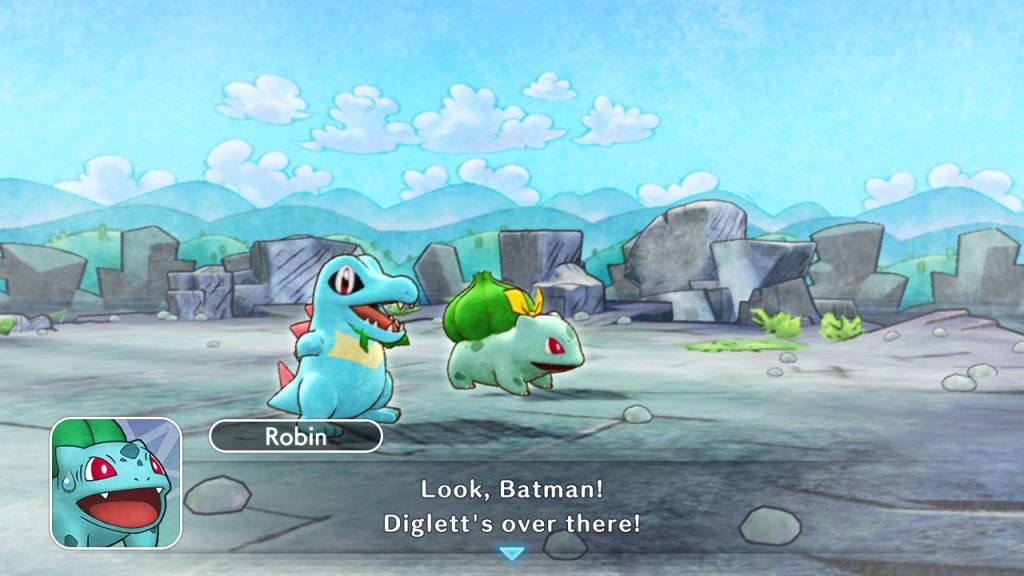
One of the key points here is that every floor of the dungeon is randomly generated. This can be good and bad. On the one hand, given you tend to rerun dungeons to fulfill new requests and so forth, not having to go through the exact same path would get tiring. On the other hand, it seems to remove the opportunity to have truly distinct level designs – after a while you tend to get used to the same general style of dungeon layout.
Additionally, sometimes at the end of dungeons you will be treated to a boss battle. It took a bit for me to get used to the idea, as while most things in the game are decently explained through letters or optional tutorials, boss battles were not as apparent. A large part of overcoming them ends up leaning heavily on your items to disable the bosses, and have teammates chip away at the boss. Moves also require some experimentation; for instance, some attacks (seemingly involving physical contact) that hit directly ahead of your Pokémon will hit an opponent positioned diagonally from you, but not if there’s a corner involved – but others will despite the lack of an obvious barrier. The Pokémon still animates moving forward and back, after all.
The dungeon and battling systems are all wrapped up in a Pokémon theme, such as each character knowing four moves, having typings which you can take advantage of (fire beats grass, etc.). There are some additions that do fall outside of the theme; while you see Rawst Berries for healing Burns, you have Revival Seeds rather than Revives or the like, and Apples as the primary method of filling your Belly (aka a hunger meter). Chestnuts also appear among the mix of Pokémon-ised fruits, which seems a touch odd, but does at least help give PMD its own distinct itemsets.
On that note, items are very important. The game is almost as much about your ability to manage inventory space and use items at the right times as it is navigating the dungeons themselves. You can upgrade aspects such as your item space by doing more rescue missions as well, which encourages doing more of these side missions, while allowing players an option to try to speedrun but with harsher item limits.
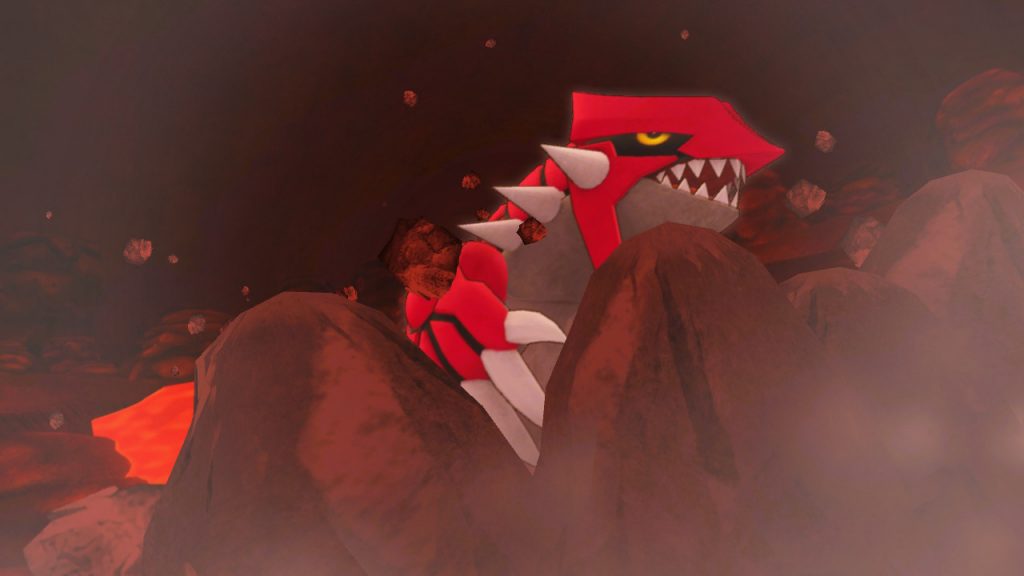
Overall the gameplay is fairly solid and fun to do. It isn’t necessarily for everyone though, and I can see where it might grow stale for people. Some of the postgame dungeons can last a whopping 99 floors – and if you lose you can quit out and lose all your items, or have someone (yourself or another player) try to rescue your initial team, which requires working yourself all the way up to where you reached. The difficulty is not consistent either. Broadly speaking it is – the earliest dungeons are dead easy, the middle of the story has a challenging section, and the postgame does away with showing you where items are on every floor. However, a middle section of the story was much harsher than the rest, not helped by some Magnitude spam from enemies, and a lack of explanation that you can choose a second path to grind items on first.
A lot of the game’s content is in the postgame. There’s an emphasis on training more Pokémon to take on a specific dungeon to fight a Legendary and recruit them, and in turn using them to beat up and recruit other Legendary Pokémon in harder dungeons. While the story itself is not terribly long, there’s no shortage of dungeons to tackle after it’s over.
Story
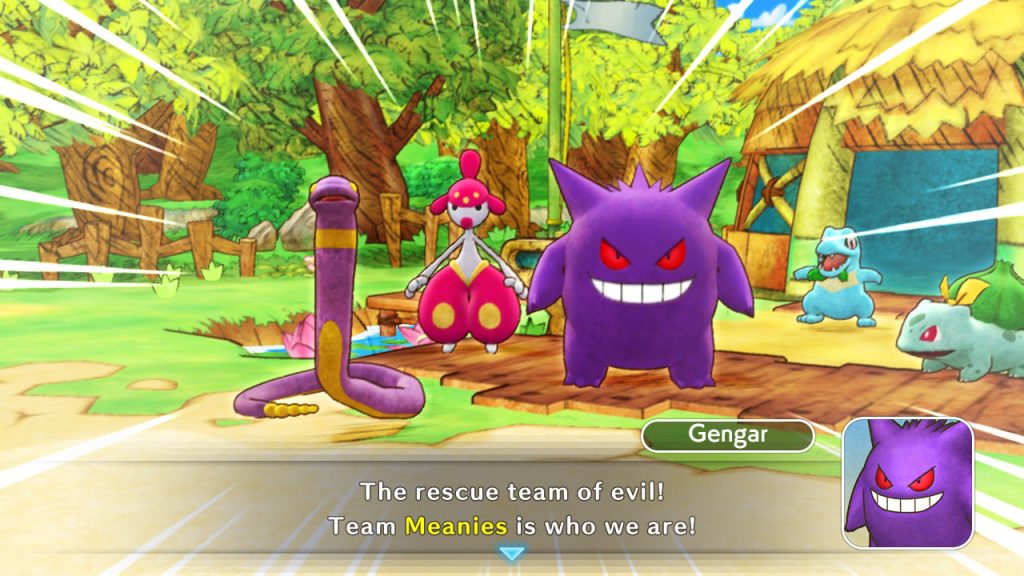
I had heard a lot about the story of the earlier PMD titles being well liked by the fandom, but in terms of details I knew pretty little about it. The basic gist (you are a human turned Pokémon for initially unknown reasons) and there being something about friendship (not exactly a new theme for the Pokémon franchise) was the extent of my knowledge.
Overall… I can’t say I was really sold on the story I experienced. Granted, there were some nice parts. The characters making up the town and other rescue squads, for one, are decently varied and have their own personalities and goals, albeit to varying extents. Interactions between the townsfolk here and there were maybe the most interesting parts, as they offered worldbuilding and gave their unique personalities a chance to shine. Some parts of the storytelling also had good levels of subtleness to it, and not everything wraps up nicely or is happy-go-lucky, which is good worldbuilding and realistic at that too.
On the other hand, there was more than one case of the game deciding to show me a flashback, which wouldn’t be an issue had the content of the flashback not happened a mere couple minutes ago. The main story itself wasn’t too deep, despite some interesting parts here and there. Legendaries in particular felt disappointing. They all behaved in the same manner, which was to be very angry at you walking near them and trying to kill you for that transgression rather than let you say anything. The story too falls back on what I can only describe as a filler episode between a major story beat and an obvious development, which hampered the pacing of the tale.
A simpler tale or moments of less exciting events is not a bad thing in itself, but even here there is room for improvement. The middle part was fairly entertaining and the most emotional, I’ll grant it that (aided again by the soundtrack). Some more tinkering and polish elsewhere would have made it much better though, in my opinion.
Music
Overall the soundtrack is a winner, with some pretty enjoyable tunes. I was aware of a few despite never playing PMD before, but a lot were new to me. The likes of Escape and Sky Tower, which I heard before, were still greatly appreciated when heard while playing the game, and the very long and eventful Oddity Cave tune was a particularly good standout. Many tunes tend to mix GBA-esque beeps and boops to varying levels, often for the bass. I wager this may add a further nostalgic quality for those who have played the original titles before.
If there is a failing of the music, it is that some tunes are fairly short before they loop. This is an issue for the likes of dungeon-specific tunes, which can be long affairs. These tunes tend to get repetitive pretty fast, especially if you want to grind that dungeon several times.
Additionally, the vocals used in some tunes can feel a bit weak, and sound effects added in detract at times. Tiny Woods is one such offender in my mind, as is Makuhita Dojo on the vocal side. Overall though I certainly enjoyed the music and don’t have strong complaints on it. Sound balancing can be a touch off – Thunderwave Cave is a great tune in my opinion, but is slightly let down by the somewhat needlessly loud DING made by the triangle player.
For a more in-depth analysis and a separate opinion on the music, check out ddrox13‘s article on the game’s music.
Pokémon Mystery Dungeon Rescue Team DX Soundtrack: A Nostalgia Bomb
Sound effects meanwhile are alright. I will say that some can be a bit overdone, such as the sweat-drop sound effect (paired with the animation for it), but otherwise there’s nothing that sounds too low quality or out of place of this mostly light-hearted, sometimes cheesy adventure.
Graphics
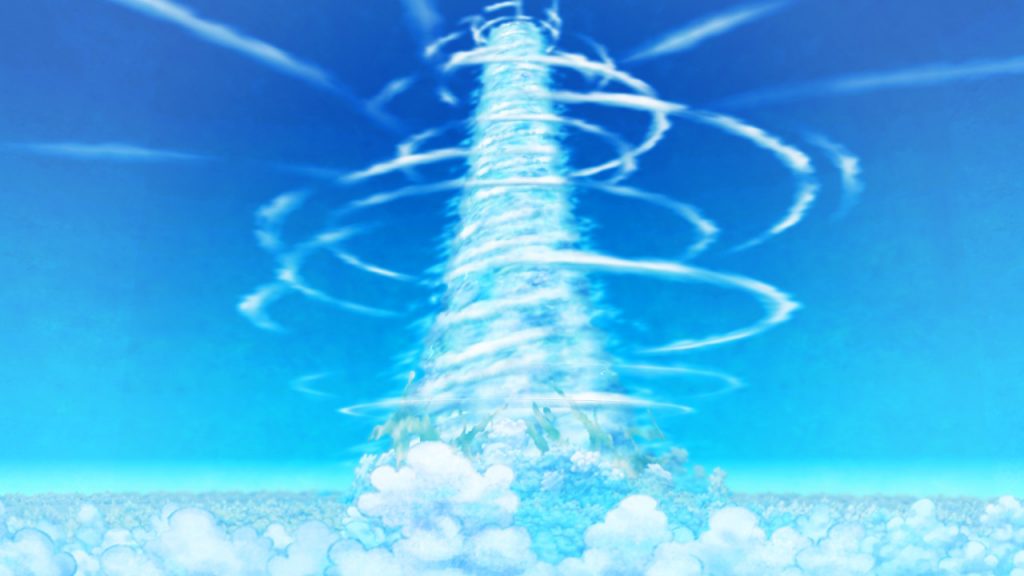
There are two stories to tell here. On the positive side, the visuals are gorgeous. The art direction for the setting and backgrounds is well done, and the use of colour and shading is very nice. There are some particularly beautiful scenes that take advantage of this. Even the illustrations, updated versions of the original game’s collection of images, are quite beautiful – no wonder the developers put in an ‘admire illustration’ button.
The same can not be said, however, of the animation work. Attack animations are somewhat simplistic in comparison and could be a bit nicer. Worse though are the movements of the Pokémon themselves. You have what I can only describe as lazy bobbing up and down (rather like Pokémon Sword and Shield‘s Double Kick animation) used quite often. The walk and run animations are also pretty poor. It’s evident that there’s a lack of proper skeletoning done of the models, resulting in very stiff and unnatural walk animations. It is bemusing when there exists walk and run animation cycles for all Pokémon in the main series games, and the models themselves are identical to those used in the Nintendo 3DS titles. It’s a strange one, and this corner cutting sticks out.
The illustrations for the speaking Pokémon do well to convey an emotion or feeling alongside their text, but this is often not well matched by their overworld counterpart. The sweatdrop solution is, as said earlier, overdone and somewhat lazy. Sometimes the Pokémon is grinning when their words and mini-portrait say otherwise.
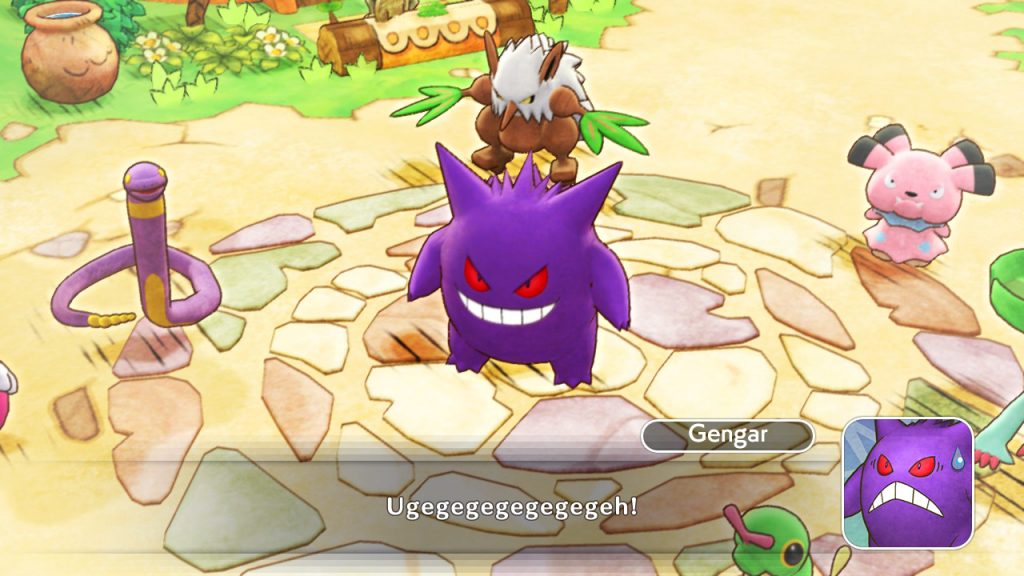
Other
It is worth mentioning that Pokémon Mystery Dungeon: Rescue Team DX has a demo available on the Nintendo Switch eShop, which allows you to play the first section of the game. Progress from that demo carries over, with the file transfer quite quick and easy to do. Points to the developers there! I recommend it for people who want to try before they buy.
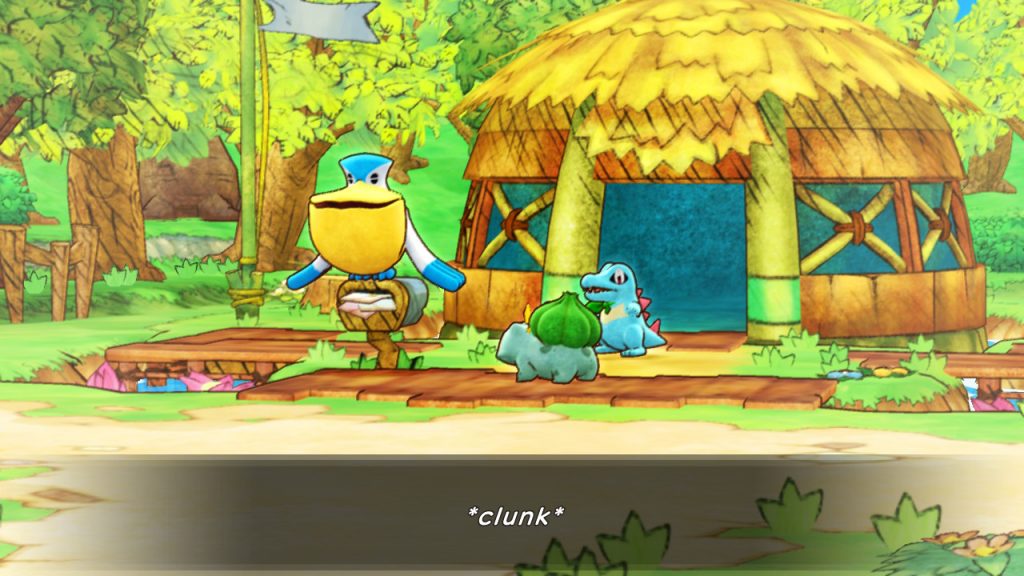
I would prefer if the game had some more options. One notable one would be the ability to skip cutscenes. Pelipper delivering the mail with that clunk noise wears a bit after seeing it tens of times. More tedious are the post-dungeon scenes, where every single Pokémon you helped will thank you. The game opts to show you this one at a time, along with the rewards and points gained in separate graphics. Surely this could be streamlined by showing all at once, or again having it skippable for more impatient players who just want to get back into the action. Some further optimisation such as picking item packs would be nice – think of the set-ups you can register and use in Monster Hunter Generations Ultimate for the same platform, for example.
The auto function is mostly a useful one to have, especially when you are using the Makuhita Dojo to train your Pokémon, or revisiting past dungeons. It does get a bit clunky at times in changing between exploring and attacking, but it does have a few different options in how your characters behave during auto-play. That said, its existence does raise the question on why a full-retail price Switch game has something that is akin to that seen in mobile game titles – did the developers realise that the game can simply get too boring for some to navigate fully by themselves? At least it is a completely optional aspect for the purist to ignore.
Lastly, it would be nice to see more varied missions during dungeons. There are only a few different kinds, and postgame dungeons don’t add much more to do besides added difficulty.
Verdict
The good
- Solid gameplay with a lot of postgame content
- Beautiful backgrounds and overworlds
- Well done soundtrack
- Charming and varied characters
The bad
- Lack of skippability in repetitive cutscenes
- Story lacking some polish in areas
- Difficulty inconsistent and not helped by some lack of explanation
- Animations and character movement can look weird or lazy
Overall, my first PMD outing is solid – not great, but good. I enjoyed Pokémon Mystery Dungeon: Rescue Team DX, and would not mind playing another title too. That said there is definitely room for improvement, and as far as spinoff titles go there are other Pokémon titles I have enjoyed more.
For those on the fence, I recommend trying out the demo first. The game may be more suited for short bursts of playing, unless you are into the genre of roguelike titles and enjoy a long slog through randomised dungeons, in which case for the most part this title should be right up your alley.
Thanks to Nintendo Australia for granting us a review copy of the game.
Edited by Aldo, Ranko, and Sheep.
